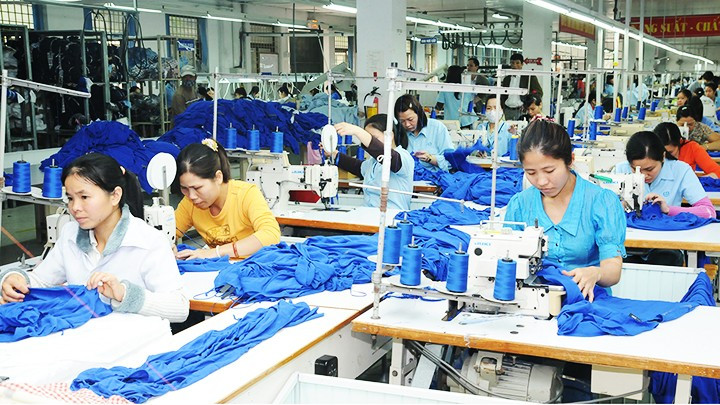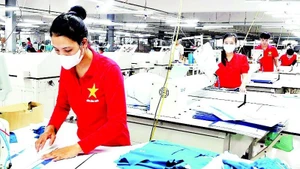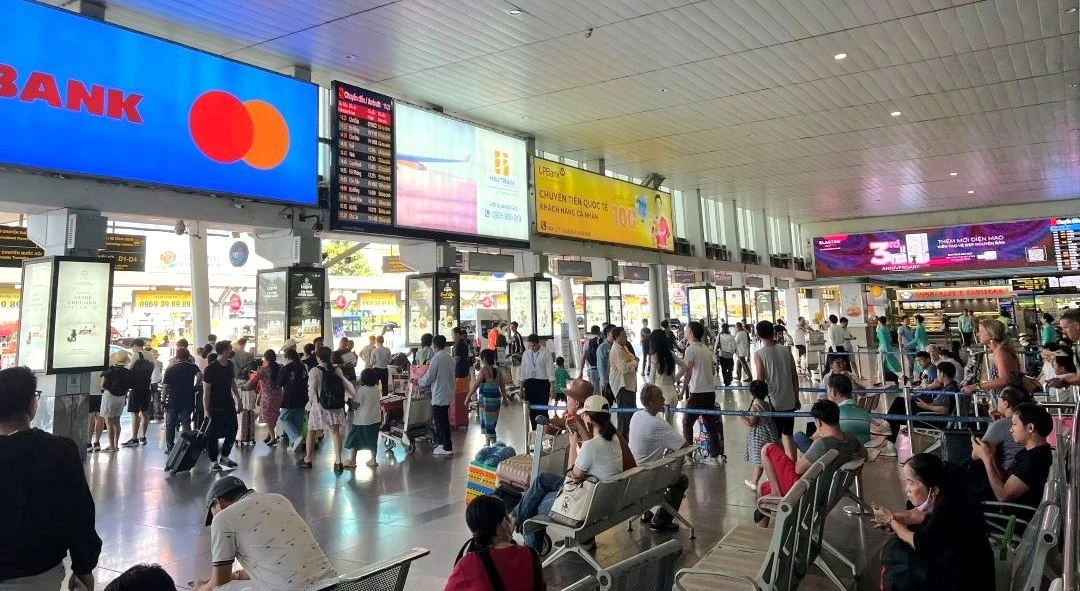According to the Vietnam Textile and Apparel Association (VITAS), despite challenging global conditions including escalating conflicts, volatile oil prices, slow economic recovery, reduced global investment, natural disasters, climate change, and complex energy security issues, Vietnam’s garment industry has maintained strong growth.
Targets fulfilled
The Vietnam Textile and Garment Group (Vinatex) reported that from the beginning of the year, most of its main export markets have shown positive signs of recovery, thanks to the shift of orders from China, Bangladesh and Myanmar to Vietnam. Additionally, inventory in key markets such as the US, the EU and Japan is showing a downward trend compared to the same period last year, and increasing purchasing power has boosted order demand from Vietnam’s partners.
At the end of the third quarter, Vinatex completed 73.6% of its full-year plan, a year-on-year increase of 2% . Profits reached 80% of the annual plan, up 70% over the same period last year. The group is on track to meet its 2024 targets. Clothing orders for the fourth quarter remain abundant. Notably, interest rate reduction policies in major markets are expected to have a positive impact, creating stable employment and purchasing power, which should improve order prices.
VITAS projected that exports in 2024 will reach 44 billion USD as expected, up 11% from 2023, with the US being the largest market at 16.7 billion USD, up 12% and accounting for 37.98% of the total export revenue. Japan comes next with 4.57 billion USD (up 6.18%), followed by the EU with 4.3 billion USD and the Republic of Korea with 3.93 billion USD.
Commenting on these results, VITAS Chairman Vu Duc Giang noted that besides the advantages of political stability and having signed numerous free trade agreements, Vietnam’s garment industry has effectively leveraged the shift in export orders from countries like China and Bangladesh. In addition, the industry has quickly adopted strategies of market diversification, customer partner diversification, and high value-added product diversification.
Exporters have also adapted quite well to meet import market requirements. Specifically, in the first ten months of 2024, the top 30 textile and garment export companies included 10 Vietnamese enterprises and 20 foreign-invested enterprises, all of which have adapted well to import market demands.
No more opportunities to choose orders
Regarding the 2025 outlook, citing a World Bank report, Mirae Asset Vietnam noted that GDP growth in Vietnam’s major garment markets such as the US, EU, China, and Japan will continue to grow in 2024 and 2025, leading to income and demand recovery in these markets.
Notably, in the past 10 months, several Western central banks have begun to lower their benchmark interest rates. Moreover, with cooling inflation and weak economic signals recently, it is expected that the US Federal Reserve will further cut rates in 2024. Lower benchmark rates will support the economy and long-term consumer demand.
US President-elect Donald Trump is expected to continue his tough tariff policy on Chinese textile and garment products, which will support other suppliers like Vietnam in the US market. With recent instability in Bangladesh, a potential rival of Vietnam, domestic clothing companies are likely to become the beneficiaries.
However, Mirae Asset also points out some risks, with geopolitical factors being the primary short-term risk for textile demand. In reality, some brands have recently shown cautious perspectives about future demand and hesitation about increasing inventory levels.
In addition, escalating tensions between China and the West could reduce Chinese textile product consumption in key markets, leading to lower yarn demand in China and negatively impacting Vietnam’s yarn exports.
Long-term risks include increasing FDI into Vietnam, which may pressure textile companies with rising labour costs. Currently, Vietnamese workers are finding it easier to seek employment abroad, further intensifying domestic wage competition.
Vinatex reported that while clothing orders in the fourth quarter remain strong, unit prices have not improved and are even lower than in 2023. Statistics show Vietnam’s average fibre and yarn export prices have continued to decline through 2024. For example, in February, the average price was around 2,433 USD per tonne, a 22% decrease compared to the same period in 2023. In this context, enterprises are actively implementing technological solutions, upgrading equipment, and enhancing management efficiency to improve labour productivity and drive business growth.
According to VITAS, enterprises now have fewer opportunities to access large orders, and mainly receive small orders with quick delivery times and stringent requirements. To achieve its 2025 goals, the association will continue to effectively perform its role by expanding export markets, actively participating in major international textile organisations, and connecting enterprises with international textile associations so as to organise training classes in technical skills, design, brand building, technology updates, professional skills, and sustainable development.
Specifically, implementing the textile and footwear industry development strategy until 2030, the industry will gradually transition from rapid development to sustainable development. From 2031 to 2035, the focus will be on effectively developing sustainable practices through a circular economy model, completing domestic value chains and participating at higher-value positions in global supply chains.
















